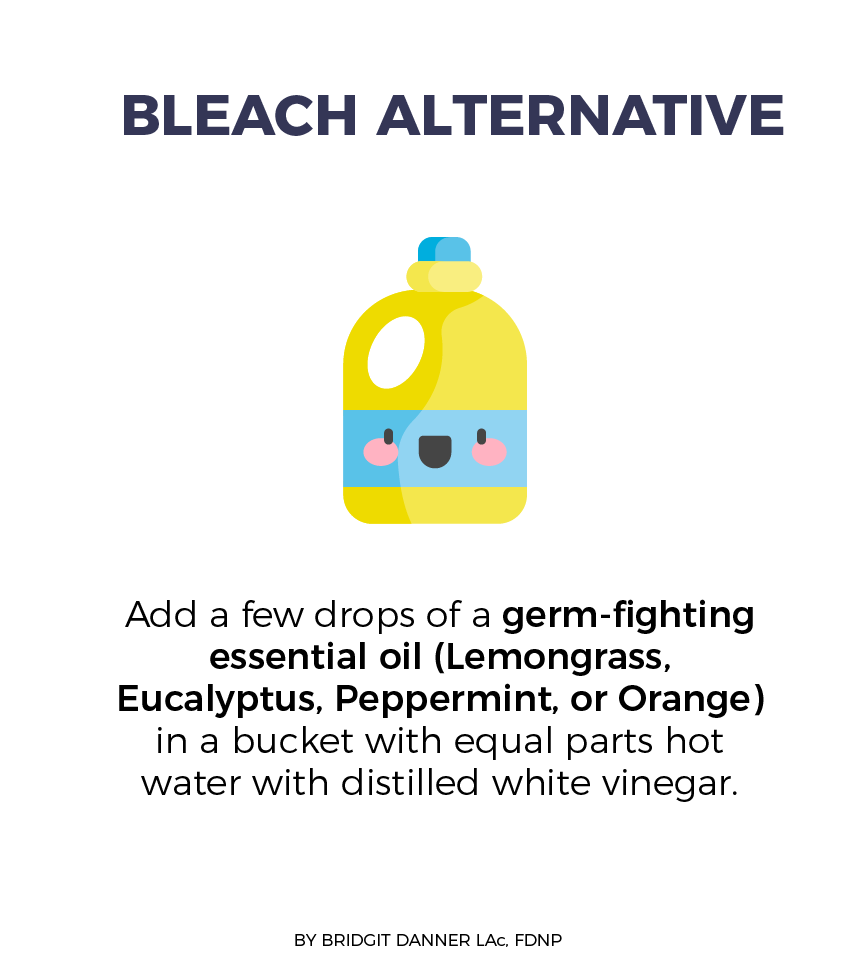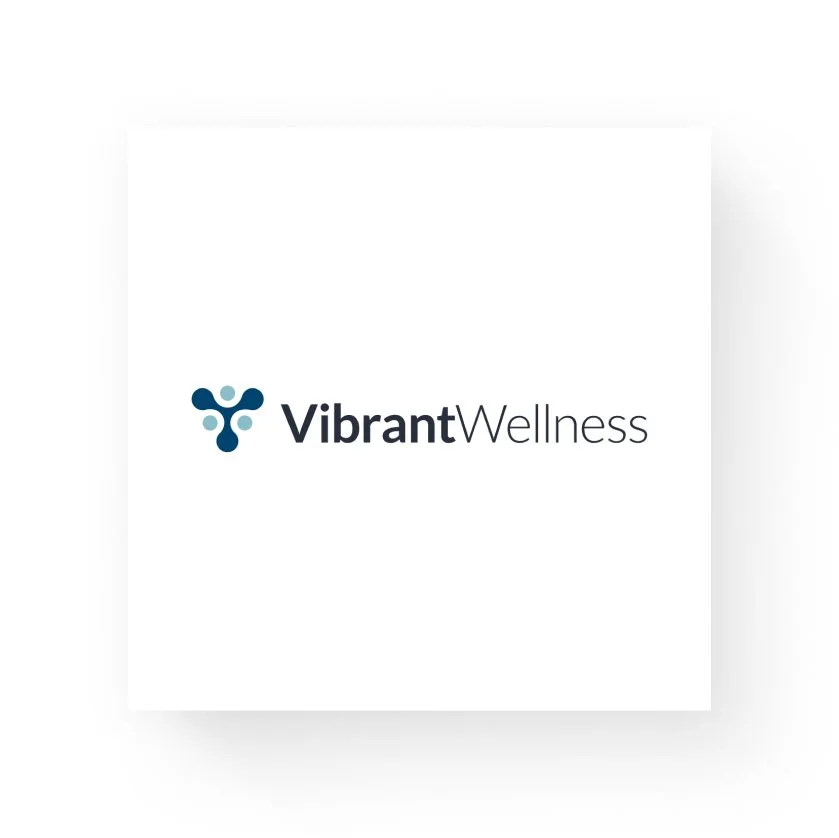The Dangers of Toxins in Cleaning Products
How Safe Is Your Home?
Take inventory of the cleaning products that are stashed away under your kitchen sink. How many of them contain harsh ingredients or ingredients that you have never even heard of? Many of us use these cleaning products on a regular basis without ever stopping to think how many endocrine disrupting chemicals we introduce into our homes daily.
The truth is that the cleaning products you use in your home may be making you feel more fatigued and overweight. They lower your thyroid functioning, contribute to cancer growth, and increase your toxic load.
You need to regain control over your health and home by getting rid of those toxic cleaning products.
Learn more about how to spot problem chemicals and which alternatives are safe for regular use around your home.
Alternatives for Fragrances and Phthalates
When you encounter an unpleasant odor in your home, what is your first reaction? Many people immediately reach for a bottle of Febreeze or a similar product that promises long-lasting fragrance to cover up the unwanted odor. This solution may work for a time, but the potential side effects of regularly using fragrances and perfumed products could be jeopardizing your overall health.
Artificial fragrances created for these types of products contain a group of chemicals known as phthalates. Phthalates are designed to help keep plastics soft, but they also cause fragrances to linger. (1) Companies are quick to add these fragrance-preserving chemicals to their products in order to meet the demand of their customers.
There are a few problems with being exposed to phthalates on a regular basis:
Hormone Imbalance: First and foremost, phthalates are endocrine disrupters and obesogens. In other words, they are known for disrupting your hormones and could be the cause of that stubborn fat that you can’t seem to shed. (2)
Weight Gain and Excess Estrogen: These products are known for having estrogenic properties. (3) When the level of estrogen or perceived estrogen in the body begins to increase, so does your weight. This could be the cause of weight on the hips and breasts that is difficult to shake. In fact, it can even lead to breast development in men. (4)
Fertility Challenges: Because of the way the phthalates interact with the hormones in your body and cause disruption, you may experience fertility issues.
Cancer and Other Issues: Phthalates can make you tired, grumpy, and overweight. These endocrine disruptors can even lead to breast cancer. (5)
Asthma and Histamine Reactions: Individuals who are sensitive to chemicals may find that the fragrances are simply too much for them to handle. The problem with fragrance is that it can cause histamine reactions and can spur worsening asthma symptoms as the scent lingers.
Fortunately, you do have some alternatives. You can purchase a store-bought air freshener without these endocrine disrupting chemicals. Many of the more natural products use essential oils for deodorizing.
Alternatively, you can make your own DIY air freshener spray using your personal collection of essential oils. In a glass spray bottle, combine a few drops of your favorite essential oil with water. Shake before use to combine the water and oil as much as possible. You may also substitute vodka in place of water.
Avoiding Bleach in Your Home
Many of us were raised to believe that bleach was the best cleaning agent for all of life’s toughest messes. It is a helpful friend for scrubbing bathtubs, cleaning your oven, and wiping down your countertops. We have even learned to conveniently package it in the form of easy-to-use Clorox wipes that come in their own container. Using bleach to kill bacteria works, but is it the best thing for you?
The truth is that we don’t really need anything as strong as bleach to clean our homes.
Regular exposure to bleach is not healthy:
Skin Irritation: Bleach is hard or your skin and can age and irritate your skin.
Asthma and Breathing Issues: Bleach acts as an airborne irritant, making it hard for those with asthma and other respiratory conditions to breathe. Particularly when combined with the phthalates and fragrances in many products, the combination could toxic.
Instead, you should really seek out DIY cleaning recipes that pack a powerful punch.
What essential oils kill germs? Research has proven that essential oils are some of the best natural alternatives to harsh chemical cleaners like bleach. They are known to kill most strains of bacteria and germs in laboratory settings. (6) Some of the most popular essential oils that are proven to kill germs include:
Lemongrass
Eucalyptus
Peppermint
Orange
Simply add a few drops in a bucket with equal parts hot water with distilled white vinegar and you have a powerful alternative to bleach. This is a great way to clean windows and doors.
DIY Non-Toxic Oven Cleaner Alternative
Using the cleaning setting on your oven may not be the best thing for your health. Between harsh cleaners and the chemicals emitted to clean up the messes left behind, you are exposing yourself to many different endocrine disrupting chemicals. It is important that you have a safer alternative that helps you to get off those stubborn baked-on food particles.
For heavier duty messes, you may need something that has a bit of an abrasive quality to it. Baking soda and hydrogen peroxide make a wonderful cleaner that is safe and effective without making you overweight or sluggish.
Sprinkle a bit of baking soda into the bottom of your oven. Pour a cup of hydrogen peroxide over the baking soda, allowing it to fizz and bubble. As the chemical reaction here dies down, you can reach in and begin scrubbing with the paste created from the baking soda.
How to Clean Stainless Steel Naturally
Do you have stainless steel appliances that need a special formula? You may be telling yourself that you actually need those harsh chemicals in order to take care of your expensive appliances. Many people fall prey to this mentality, but it simply isn’t true!
You can make the best DIY stainless steel cleaner recipe with just two simple ingredients: water and lemon essential oil.
In a small spray bottle, combine roughly one cup of water with seven to ten drops of lemon essential oil. This will give your stainless steel a thorough cleansing from bacteria and germs without harming the metal. (7)
Do You Need Fabric Softener?
Don’t you just love the feel of a warm blanket coming straight from the dryer? Many people feel that they just can’t live without their fabric softener. It contributes to a better-smelling batch of clothes that feels fluffy and soft. Unfortunately, this is the effect of harsh endocrine disrupting chemicals at work.
Fabric softener has several problems:
Hormone Disruption and Weight Gain: Similar to products like Febreeze, the fresh scents that you see advertised on your fabric softener contain phthalates that disrupt your hormones. These phthalates, much like the ones featured in aerosol sprays, mimic the effects of estrogen on the body. Estrogen is a necessary hormone, but there is such a thing as having too much. It really aids you in packing on pounds in the hips and breasts.
Thyroid Issues: Another major issue with phthalates is that it disrupts thyroid function. In one research study, scientists found that individuals with higher phthalate metabolites in their urine had lower levels of circulating thyroid hormone in their blood. (8)
Toxin Buildup and Liver Strain: These phthalates also contribute to your overall toxic load. The liver is designed to process toxins that enter the body, but it may not be able to keep up with all the synthetic toxins introduced via your cleaning products. As a result, those toxins actually get stored in your fat tissue in an attempt to protect you. (9)
Keep in mind that you will not see phthalates listed under the ingredients section of your fabric softener. They are often disguised by clever marketing terms like “fragrance” or “parfum.” Look for formulas that contain essential oils as the fragrance, but remember that even fragrance-free fabric softener often contains harsh chemicals.
The truth is that your clothes do not necessarily need fabric softener to look and feel their best. You can enhance your laundry using natural ingredients like baking soda and white vinegar. Both of these simple products are safe to use on clothes, safe for your skin, and are free of synthetic fragrances. Simply add a ¼ cup of each to your washing machine to keep clothes soft and eliminate static cling.
The Problem with Toxic Cleaning Ingredients
Many of us have been lulled into a sense of complacency about the cleaning products we have to choose from. We are inundated with fragrances and harsh chemicals that promise a deeper clean. However, there is another alternative that leads to a healthier lifestyle free from hormone disruption.
Next time you are tempted to pick up a bottle of bleach or spray synthetic fragrance in the air, take a moment to consider the potential side effects. It could be contributing your weight, energy levels, cancer development, toxic load, and so much more.
Is it worth it for you to use those convenient products?
Most people would choose their health over convenience. With a few of these simple DIY cleaning recipes, you can get an effective clean without sacrificing your health to do so.
MY FAVORITE TOXINS TEST!
Wondering about the toxins you've already been exposed to? We can help you run and interpret an Total Tox-Burden + PFAS Chemicals by Vibrant Wellness.
This incredible test covers so many types of toxins. Includes:
Plastics exposure, including styrene, phthalates and vinyl chloride
Detox ability and glutathione status
Petrochemical load
Herbicide exposure
Exhaust and fumes exposure
Toxic mold
Glyphosate (i.e., RoundUp, the most common pesticide)
Candida
Clostridia infections
Oxalate build-up
B vitamin status
Mitochondrial damage
You will be surprised how many toxins your body is storing, even when you are avoiding them and eating organic!
This test can be run for most cases and we offer an optional custom consultation for review and protocol with one of our coaches. Learn more below!
Bridgit Danner, LAc, FDNP, is trained in functional health coaching and has worked with thousands of women over her career since 2004. She is the founder of Women’s Wellness Collaborative llc and FunctionalDetoxProducts.com.
Check out her easy 5-Day DIY Detox Guide here!








